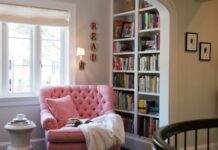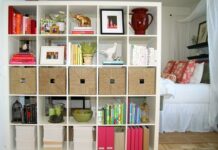By Melissa Rayworth
We’re told a well-designed master bedroom should be an oasis of romantic calm. It’s also supposed to be the practical place where you store clothing and get a good night’s sleep, and it may also be where you watch television, pay bills and even set up a home office.
That’s a lot to ask of a single room.
On the bright side, said interior designer Brian Patrick Flynn, you have plenty of decorating freedom. “Since bedrooms are all about self-expression and comforts,” he said, “you can break the rules as much as you want.” We’ve asked Flynn, founder of Flynnside Out Productions, and two other design experts — Betsy Burnham of Burnham Design and Molly Luetkemeyer of M. Design Interiors — for tips on breaking those rules with style to create the ultimate master bedroom.
Forget trendy shades or your favorite bright colors. Burnham advises sticking to a soothing palette of ivory and white, evoking a luxury hotel room. “You can layer color into that if you want to,” she said.
If your idea of peace and quiet involves deeper colors, Flynn suggests navy blues or black-brown tones.
And if you really want bolder color or patterns, Luetkemeyer recommends using a single pattern throughout your bedroom. This “en suite” look involves using the same fabric for curtains and bedspread, and even covering the walls in the same pattern.
“Even a busy pattern won’t feel too chaotic if you’re consistent” in using it throughout the room, she said.
Think your medium-size or small bedroom can’t handle a gorgeous four-poster bed? Burnham said a bed like that can serve as “a statement piece” that brings lots of style. It actually frees up space, because you won’t need any extra, decorative pieces of furniture for pizazz.
Flynn agrees, as long as the bedroom isn’t extremely small and the nightstands are in proportion. One of his pet peeves is a large bed flanked by tiny tables, which can make the tables look like they belong in a dollhouse.
These designers are seeing a trend toward upholstered beds and headboards, and even upholstery fabric used on walls.
“It’s this idea that you’re being completely cocooned and buffered from the world,” Luetkemeyer said. For some clients, she has also upholstered the inside of armoires or other storage pieces to create a complete sense of softness.
With softness in mind, Flynn suggests using more than one layer of window treatment: “I usually layer black-out shades with custom, pleated drapery panels,” he said. “This softens the hard edges of the room, helps with noise control and also allows the homeowner to sleep in as late as they want.”
If you’re worried that all that softness will make the room too feminine, Burnham suggests adding just a few sharper, cleaner lines for balance. Choose sleek, mid-century vintage lamps to place on either side of an upholstered bed. Or, opt for a dresser with simple, clean lines rather than a piece that’s ornate and curvy.
It may sound radical, but Luetkemeyer hears from clients now that they’re ready to remove the TV and all gadgets from their bedrooms. “People are saying, ‘I’m in such overload all day long, and I’m reachable within an inch of myself,’ ” she said.
Burnham sees the beginnings of a similar trend, though for many people the habit of checking e-mail in bed or watching TV before they go to sleep is a hard one to kick.
If you have a desk in your bedroom, consider relocating it. And try plugging in your phone and other gadgets somewhere else in your home at night so you won’t be tempted to check them.
Flynn suggests using 30-inch-tall dressers or chests instead of traditional nightstands: “I’ll hit up flea markets and find two different chests with very similar proportions,” he said, using these less expensive pieces to flank a more expensive custom headboard or platform bed.
Luetkemeyer agrees that closed storage at bedside is a wise move for most people. It keeps necessities handy, but hides clutter to make your sleeping area look organized even when it isn’t.
Chandeliers are often used in dining rooms and entryways to add glamour and drama. Flynn’s tip? They “work just as well in bedrooms.”
“I often install pendant lights over nightstands instead of using table lamps,” he said, “especially if the headboard is tall and dramatic. Whenever possible, I try to use sculptural pendants which introduce interesting shapes to the room and I always, 100 percent of the time, install them on dimmers.” — AP












